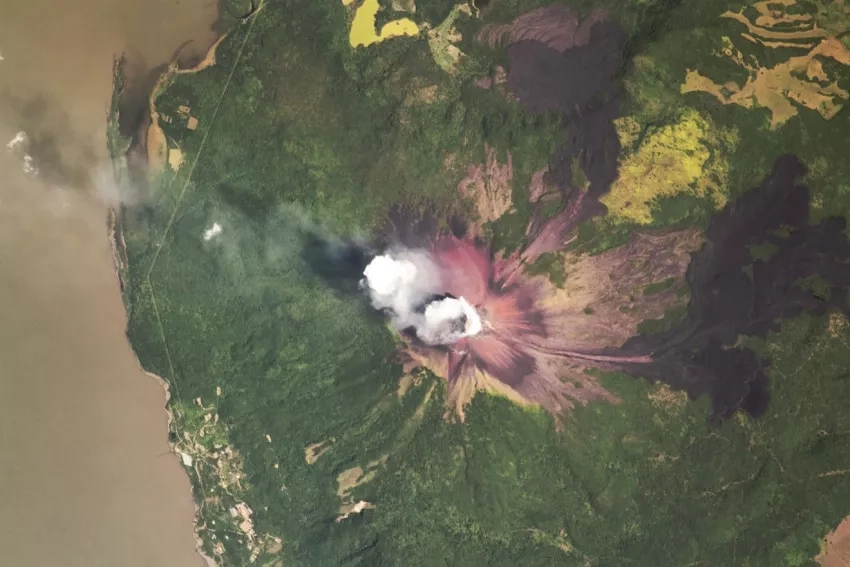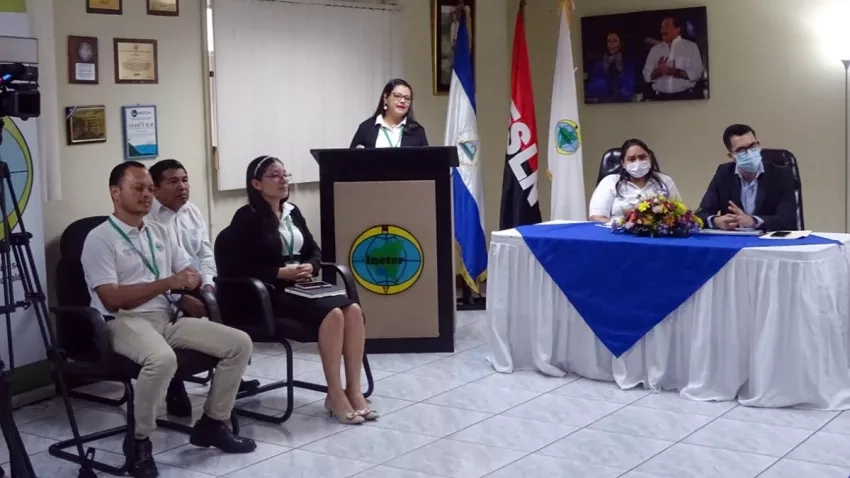A new volcano research supersite has been approved and set up in Nicaragua. The establishment of this supersite will strengthen satellite-based volcanic monitoring and surveillance in Nicaragua, expand international collaboration with the local scientific community and increase attention on vital scientific questions pertaining to the region. Earth Observation data will also serve as a basis for scientific studies for comprehensive disaster risk management to help provide timely disaster response to the 3.6 million people who live or work near active volcanos in the country.
Nicaragua is the first country in Central America to have a volcanic supersite. With 21 active volcanoes, Central America hosts some of the world’s most significant volcanic activity. This large number of volcanoes and high level of activity makes the region a valuable natural laboratory for study. The supersite will research volcanoes including Cosiguina, San Cristobal, Telica, Cerro Negro, Momotombo, Peninsula de Chiltepe, Masaya and Concepción – all of which are all currently active.
NASA’s Disasters Program has long been working to support the creation of such a geohazard Supersite in Central America through involvement and leadership of the Group on Earth Observations (GEO) AmeriGEO Disasters Working Group, the Committee for Earth Observation Satellites (CEOS) Working Group Disasters (WGDisasters) and in collaboration with the Coordination Center for the Prevention of Disasters in Central America and the Dominican Republic (CEPREDENAC) and Nicaraguan Institute for Territorial Studies (INETER).
CEOS virtually endorsed establishing the new GEO GSNL Permanent Supersite in Nicaragua on May 21, which allows CEOS member agencies to share proprietary data through the established CEOS WGDisasters data provision process. The endorsement followed the March 2 approval to adopt the supersite by the GSNL (GEO Geohazard Supersites and Natural Laboratory) Scientific Advisory Committee of the CEOS Disasters Working Group. The GSNL initiative is a voluntary international partnership aiming to improve geophysical scientific research and geohazard assessment in support of Disaster Risk Reduction (DRR) through an Open Science approach.
Multiple CEOS member space agencies will support the Nicaragua supersite by contributing satellite imagery of the area at no cost–within a specific quota agreed to in advance. In-situ data providers, such as geophysical monitoring institutes and research infrastructure consortiums also provide open access to data and research products and contribute in-kind resources to manage the supersites and their data infrastructures. The international scientific community applies the openly shared Earth Observation data to investigate the volcanic or tectonic processes ongoing at the supersites and shares the research results in a format that allows for continued use.
INETER, commissioned with volcanic monitoring in Nicaragua by the country’s government, will administer the supersite to foster a smooth and rapid uptake of information produced by scientific investigations to end-users and decision-makers. The updated scientific awareness can be extremely valuable for prevention and response activities at the supersites. Official end-users of the Nicaragua supersite already include Nicaragua’s National System for Prevention, Mitigation and Attention to Disaster (SINAPRED) and the National Autonomous University of Nicaragua (UNAN).
The Nicaraguan government and participants celebrated the volcano supersite designation in a public inauguration event on June 3. Appearing virtually at the event, the program manager for NASA’s Earth Science Applied Sciences Disasters program area, David Green, noted that the supersite had been in the works for several years. Green explained that placing a priority on open science and international collaboration for actionable geohazard information reduces disaster risk and benefits society. “It will increase NASA’s ability to serve many local and national end-users with increased access to data, especially SAR data,” he added. “This supersite designation will benefit science, applications, and policies for timely data access and collaboration for disaster reduction, transfer of knowledge, and capacity development.” The Nicaragua Minister of Risk Management, Guillermo Gonzalez, the Director of CEPREDENAC, Claudia Herrera, and the Director of INETER Vladimir Gutierrez were among those who thanked NASA for the agency’s leadership and support toward the establishment of the Nicaragua volcano research supersite.
See the Geohazard Supersites and Natural Laboratories Initiative Proposal, “Volcano-tectonic Geohazard Interaction within the Nicaraguan Depression.”
Learn more about NASA's disaster risk reduction and resilience efforts in the Americas:
Collaborating With Partners in the Americas to Enable Disaster Risk Reduction:
Ricardo Quiroga: Building Disaster Resilience Throughout the Americas:






